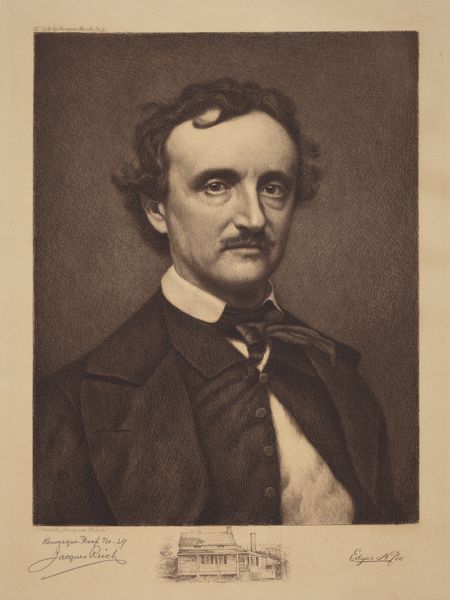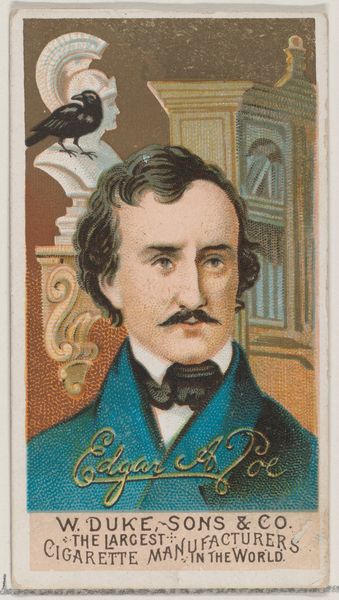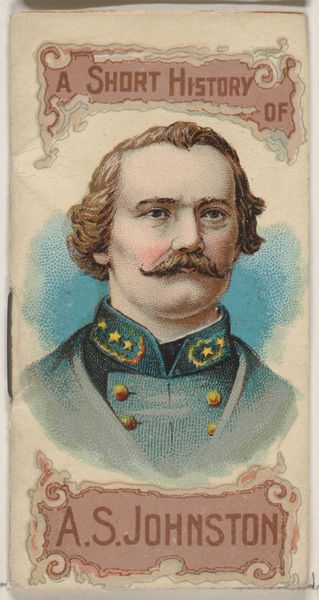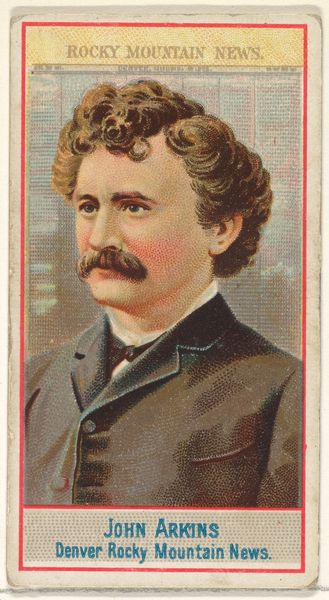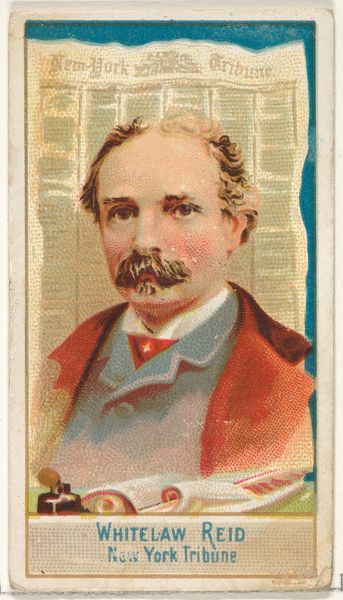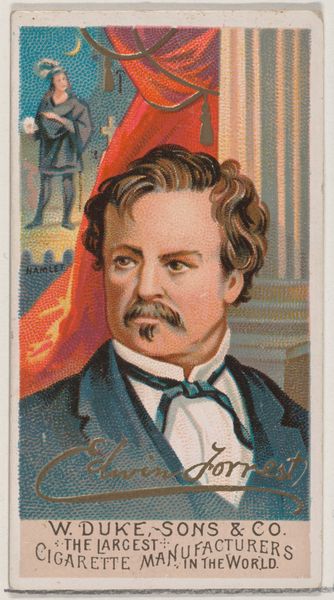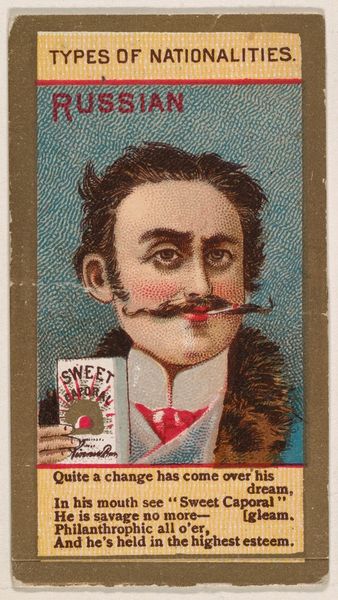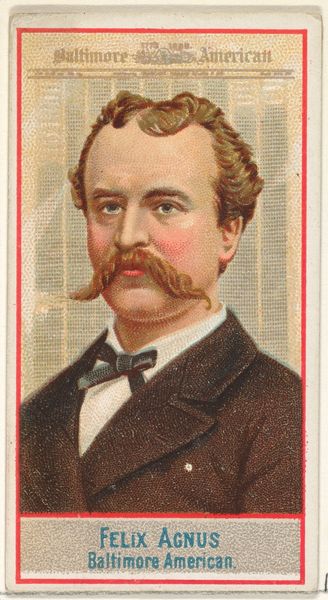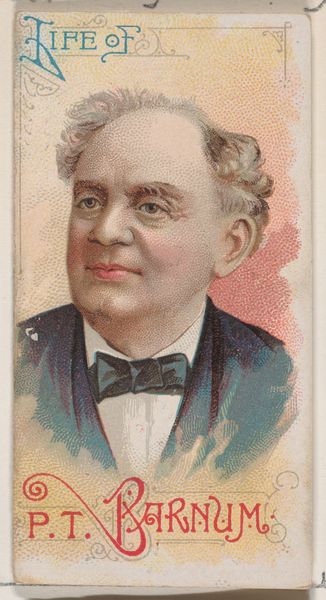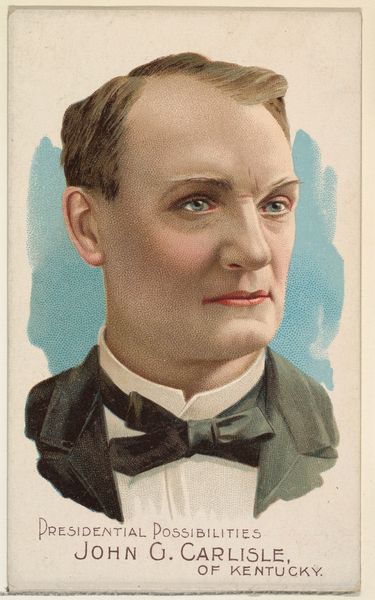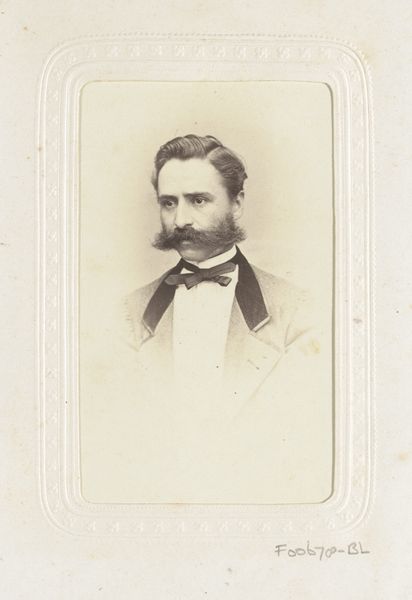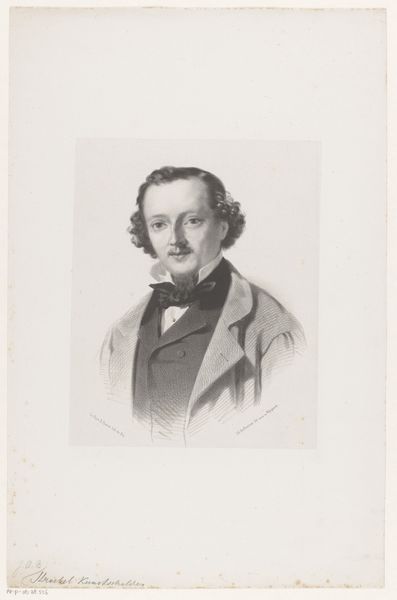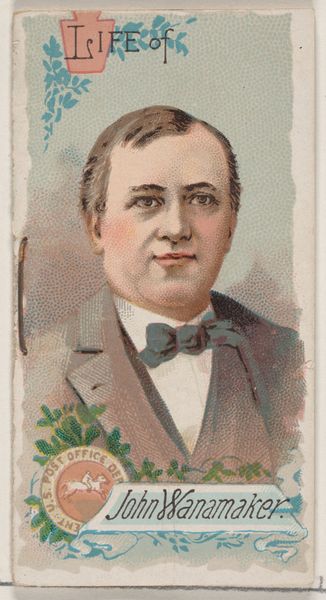
History of Edgar Allan Poe, from the Histories of Poor Boys and Famous People series of booklets (N79) for Duke brand cigarettes 1888
0:00
0:00
drawing, print
#
portrait
#
drawing
# print
#
caricature
#
caricature
#
history-painting
Dimensions: Overall (Booklet closed): 2 3/4 × 1 1/2 in. (7 × 3.8 cm) Overall (Booklet open): 2 3/4 × 2 7/8 in. (7 × 7.3 cm)
Copyright: Public Domain
Editor: Here we have a print from 1888, titled "History of Edgar Allan Poe" by W. Duke, Sons & Co. It's from a series of booklets included with Duke brand cigarettes. It feels a little... stiff. The colors are so bright, but Poe's expression is so serious. What can you tell me about this piece? Art Historian: Well, it's fascinating how commercial interests intersect with cultural perception. Cigarette cards like this were a form of early advertising. They distributed idealized, sanitized narratives of famous figures to promote a product, creating almost collectible biographies with the purchase of cigarettes. It wasn’t just about selling tobacco. What does presenting "history" in this way say about what society valued? Editor: So, Poe's inclusion was a way to make cigarettes seem more... cultured? Art Historian: Exactly. It’s about associating the brand with a palatable version of cultural cachet, which arguably flattens the complexities of the artist. Look how Poe is depicted: cleaned up, respectable. How does this portrayal compare to what you know about Poe, the tormented author? Editor: He was famously troubled. So it’s a marketing strategy, presenting an acceptable face while ignoring the darker aspects of his life. Almost like a form of cultural appropriation in a way. Art Historian: Precisely. These images influenced public perception. How accessible history is mediated and how social narratives of people like Poe are strategically packaged says much about society, as is just as much about the actual man behind the packaged history. So, the image tells one kind of truth; the reality might reveal another. Editor: I hadn't considered the role of something like a cigarette card in shaping cultural memory. Art Historian: It’s a reminder that what we often perceive as historical truth is actively constructed and disseminated through various channels, including, perhaps surprisingly, advertising. Think critically about how and why this particular Poe might appeal to consumers at the time. Editor: That makes you consider how easily a culture is manipulated. Food for thought. Thanks!
Comments
No comments
Be the first to comment and join the conversation on the ultimate creative platform.
